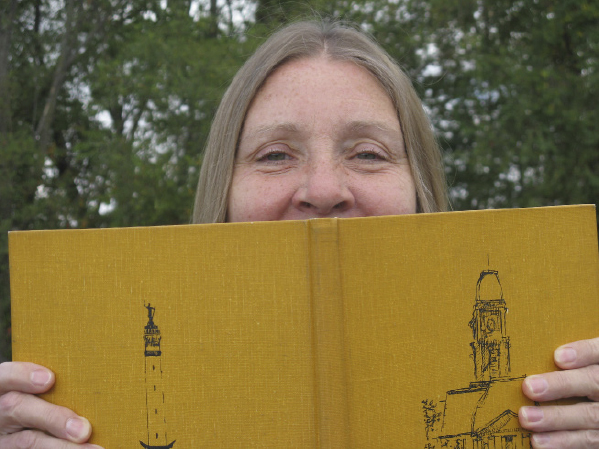New Exhibits at the ‘Virtual Museum’

We’ve got some new exhibits at the From Time To Thyme Virtual Museum!
(Remember — this is a “virtual museum” because it’s unclear if any of the objects in it still exist, or if they do still exist, where they might be today.)
Our first “relic” (that’s what they were commonly called back in the day) appeared in the February 12, 1909, Enterprise.
The newspaper reported that Wayne Township school teacher Floyd W. Zimmerman had donated several items to the historical collection being displayed in the courthouse basement.
The article singled out for special attention a photograph of Jesse Fisher, the first superintendent of the Hamilton County Poor Farm.
Fisher’s photograph was a 100% Wayne Township item. Not only had Fisher been a Wayne Township resident, but the photo’s frame had been made by a Wayne Township boy out of wood taken from the rafters of the township’s first schoolhouse.
Moving along to the next exhibit . . .
The October 5, 1906, Hamilton County Ledger observed that a lance from the Mexican War was on display in the show window of Noblesville’s J. G. Heinzmann & Co. clothing store.
The steel lance with brass mountings was the property of Joe Bowers “of sandwich fame.” (At that time he was operating a lunch wagon on the courthouse square.) Bowers’ got the weapon from an uncle who’d taken it from a Mexican soldier after the battle of Buena Vista in 1848.
The next relic is a medal from the 1840 U. S. presidential campaign.
The August 5, 1892, Hamilton County Ledger noted that the medal was about the size of a “silver quarter” and featured an image of William Henry Harrison, his name and birthdate (February 9, 1775.)
The opposite side carried the inscription, “The choice of the people in the year 1840,” and showed a log cabin with a barrel of cider beside the door. (A barrel of cider “entered into the composition of all the campaign songs of that day.”)
According to the newspaper, this relic belonged to W. H. Dickson an “expert millwright” at the Model Mill. Unfortunately, that’s the only information I could find on him. I suspect he moved on at some point and took his medal with him.
Next up is an “old fashioned flint pistol” discovered in 1902 by Ed Willits during the demolition of a log cabin on his mother’s farm near Deming.
According to the January 17, 1902 Hamilton County Ledger, the gun barrel measured six inches long and was made of solid brass. The article also noted that the weapon’s bore was twice the size of the caliber of revolvers in 1902.
If the Willits name rings a bell, that’s probably because he was the original owner of the E. H. Willits dry goods store that sat on the northwest corner of Logan and North Ninth Streets in Noblesville when I was growing up.
Our final exhibit is a Confederate army buckle. Made of brass, it measured two by three inches and had “C.S.A.” stamped on it.
The buckle was discovered by Harry Crumbaugh as he walked through the barnyard of his farm northeast of Aroma. How the buckle got there is a mystery. Crumbaugh had been living on the farm for 15 years and had never seen it before.
The September 30, 1915 Noblesville Daily Ledger speculated that the strange object could have been in the ground for many years until rains washed away enough dirt to expose it.
The article offered two possible sources for the buckle. One was a Civil War veteran who’d lived on the farm shortly after the war. Another was a later resident, originally from Kentucky, whose father may have served in the Confederate army.
Unfortunately, we’ll never know for sure.
Paula Dunn’s From Time to Thyme column appears on Wednesdays in The Times. Contact her at [email protected]
